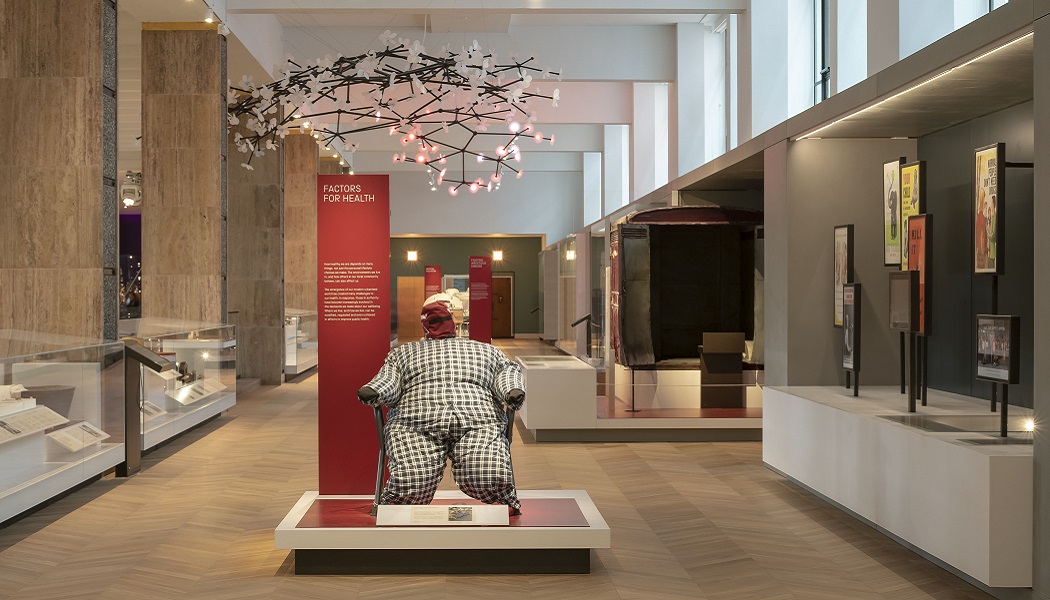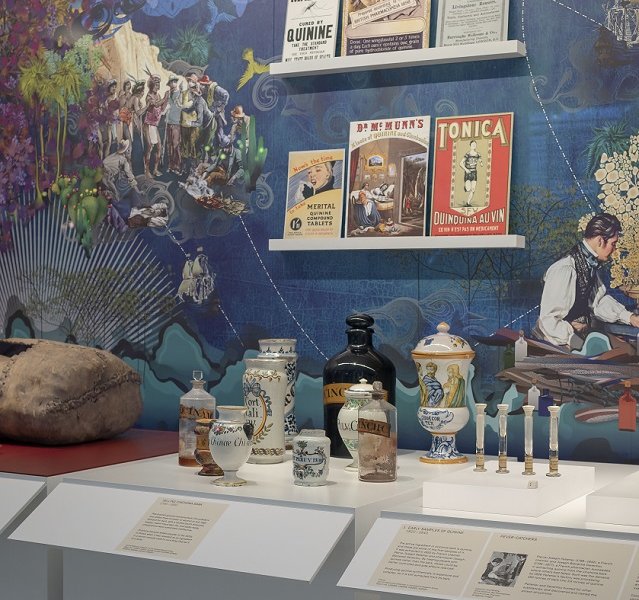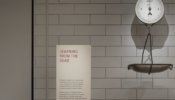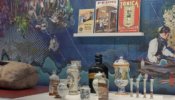How did the Wellcome Galleries differ from other projects you have worked on, and what were some of the key benefits and challenges?
Our portfolio is varied, and a lot of our projects are very different. For this particular project we provided the interpretation graphics, so all the labelling and everything you read in the gallery to tell the story. We also designed many of the environmental graphics, which support the stories of the objects in the cases. Our wayfinding experience also helped as we understand how people need to move and pace themselves through any particular space. Everything hinges on what information you need to tell visitors and when.
We previously worked on the Medieval and Renaissance Galleries at the V&A, which was on a similar, if not even larger, scale. We’ve also been involved at venues such as the Tower of London. This significant exhibition experience alongside that from a variety of other sectors was invaluable.
Having worked with the V&A, they are completely object led and that is where the Science Museum wanted to go with this gallery. The difference between the Medieval and Renaissance Galleries versus the Wellcome Galleries is that a lot of the V&A objects are intrinsically beautiful in their own right and tell a story aesthetically. At the Medicine Galleries, some of the objects are incomprehensible for a lot of visitors. This was why the environmental graphics were so vital, to set an informative backdrop and help tell the story.
Another unique element was that the brief contained a stipulation that the design should last a minimum of 25 years. It’s really important for a museum, considering their budget and scale, that their galleries last and are timeless. A design that can only engage visitors for four or five years is just not enough. Robustness and longevity were a key consideration to deliver the design life the museum needed.

What was unique about this particular space in the Science Museum and what opportunities did it present?
There are five galleries in total, which all have a different look and feel. Having said that, they all need to follow on from each other and visitors have to be able to access each story individually but also as a whole – like separate chapters.
The Galleries span almost an entire floor of the Museum, so people can access the galleries from several different points. We had to ensure our design engaged visitors no matter where they entered the space. Allowing people to dip in and out is really important.
Does the content of a museum directly influence your design and, in the case of the Wellcome Galleries, how did this manifest?
It’s all influenced by the content. For example, we used colours relative to the content for the interpretation graphics – bone and venous blood red – throughout the materiality. We referenced medical techniques in some of the environmental graphics, such as stitching into canvasses to suggest that used on skin in medical settings.
Our design also had to respond to each gallery’s existing design. They were all of different ages and styles. Some of the galleries had no natural light and others have a lot of natural light. Some were self contained and others a void opening onto the floors below.
The galleries’ themes are reinforced through the choices made in terms of materiality and lighting; with surfaces ranging from dark-toned panelling at the start and end of the galleries through to a brighter, daylit section in the centre. Our materiality and palette choices had to respond to these changes in physical environment.
We tend to get quite a lot of creative reign. Organisations come to Holmes Wood for our creative expertise. The museums are the experts in the stories and they come to us to help them tell that story in the most creative and engaging way possible. It was a very collaborative process, not just with the museum but also with the architects. We all had the same consistent vision.
How do museums benefit from incorporating Holmes Wood design?
Often museums’ design teams just aren’t big enough to have the capacity to deliver galleries on a scale such as the Wellcome Galleries. There are lots of great designers working at museums and we would never be dismissive of that; they have all the expertise and the knowledge to tell the stories, it’s just impossible for them to commit the time an external agency can to a major design project.
An external agency can pull on a wider range of experience as we have worked on many different types of projects. Sometimes in-house you’re too close to what you’re doing. It can be easier for someone with more distance to cut through and distill what needs to be said.
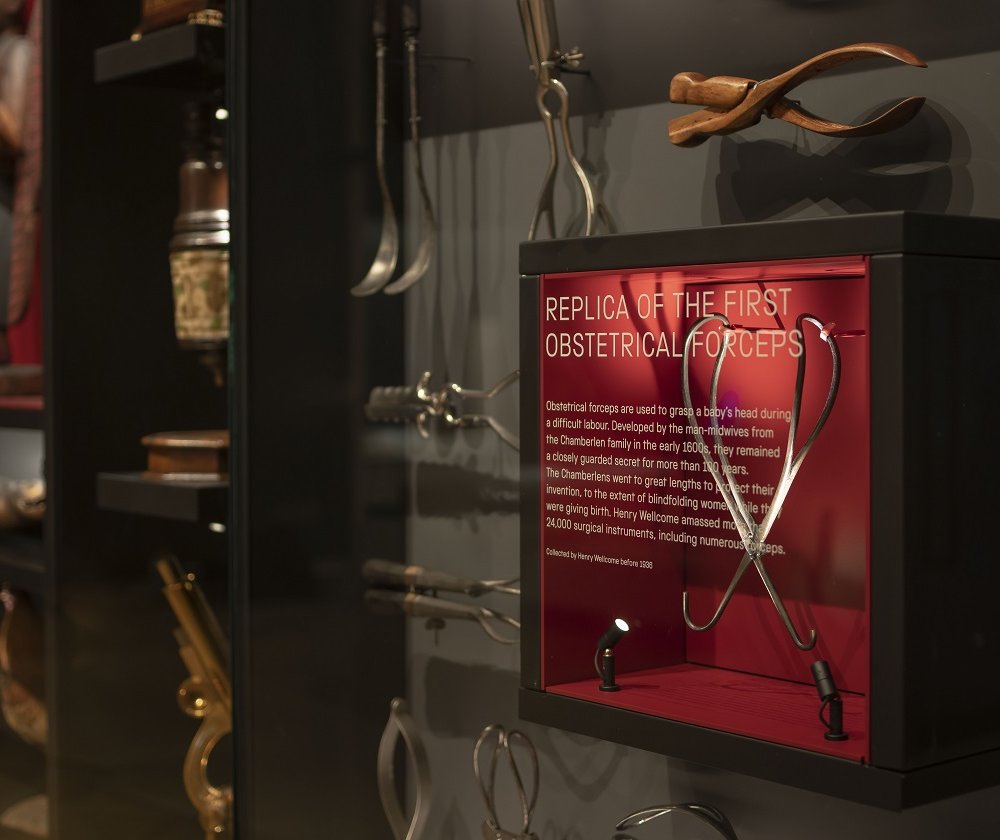
How do you research and innovate to deliver designs which ensure the optimal engagement with visitors?
We always strive to be at the leading edge of what we’re doing. We keep on top of what’s happening in the industry – in terms of graphics and technology. We do a lot of research and benchmarking to assess what’s going on, both locally and globally.
For the Wellcome Galleries we spent a lot of time working closely with the museum team to fully understand the different visitor profiles so we could ensure our design approach met their individual requirements. Our work has enabled an extremely complex story to be told in an accessible and engaging manner for visitors from all age ranges and interests.
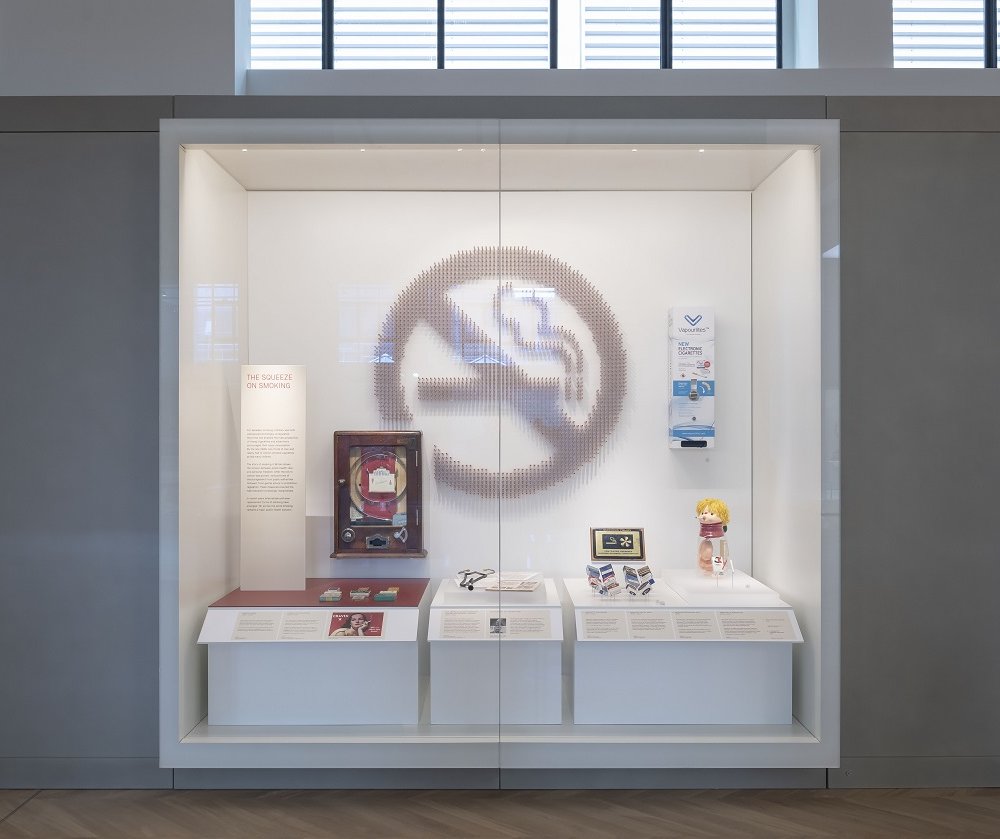

What would you identify as some of the key trends in museum design?
At this time budgets can be challenging and tight. Thinking laterally about how to approach any particular design issue is critical in order to meet the museums expectations and push them beyond these.
Visitors now expect a more interactive and immersive experience, Gallery visits are not as pedestrian as in the past. Everything needs a point of difference. Particularly in London, there are so many things out there for people to visit, you have to have something different to attract your visitors and keep them coming back again and again.
Interpretation is dependent on the object and the story. Not every item requires all singing, all dancing support to tell its story. It’s finding the right balance. You need to pace the journey through an exhibition. It’s like a music score, with a rhythm of periods of intensity periods interspersed with quieter lulls.

